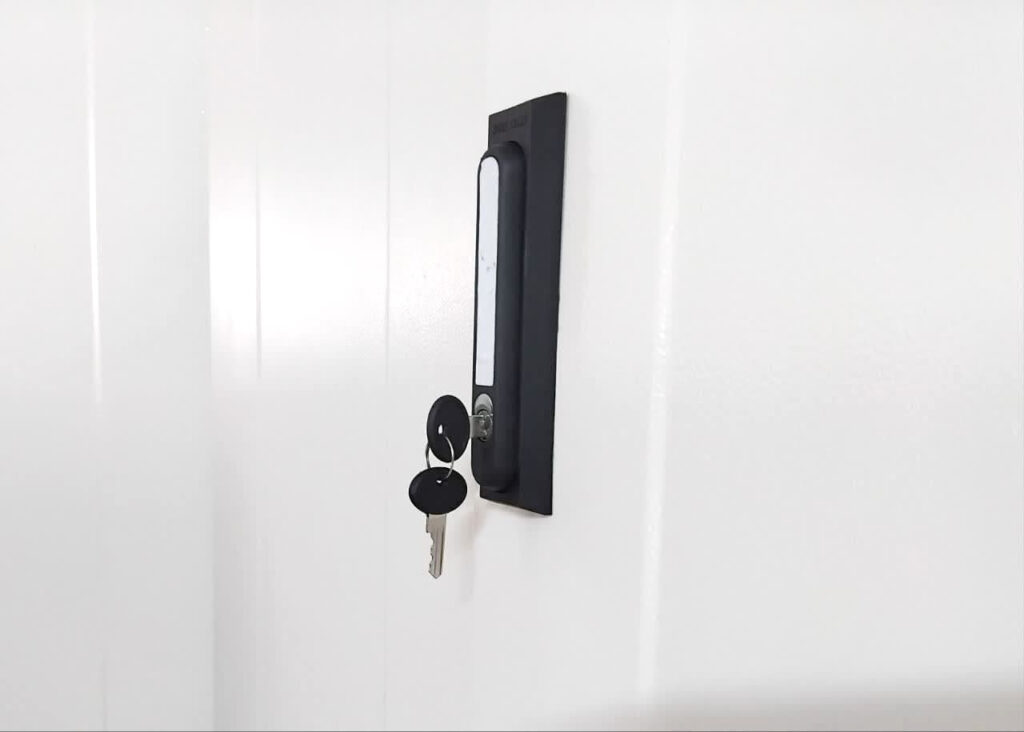
The specifications of locker cabinets can vary depending on the intended use and available space. Generally, height, width, and depth dimensions are considered. Standard-sized cabinets are usually 180-200 cm in height, 60-90 cm in width, and 50-60 cm in depth. However, different dimensions may be preferred in customized or commercial-use cabinets. Locker cabinets can vary in the number of compartments they have. The number of compartments determines the number of storage spaces allocated to users. Each user can have a separate compartment, or there can be shared compartments designed to accommodate multiple users. The number of compartments is determined based on the number of users and their needs.
Size and Capacity
The height of the locker should be set so that users can easily access it. The standard height of a locker usually ranges from 180 to 200 cm. However, different heights may be preferred depending on the size of users and the purpose of use. The width determines the amount of items that can be placed inside the locker and the number of users. Widths typically range from 60 to 120 cm. For scenarios where multiple users will share the same locker, a wider locker may be preferred. The depth of the locker varies depending on how the items inside are arranged and the purpose of use. Material and Durability
Steel is a frequently chosen material for locker cabinets due to its durability, strength, and longevity. Cabinets made from thick steel sheets can be resistant to impacts, deformation, and corrosion. Wood is a material that provides a natural look and a warm feel. Durable types of wood, especially those containing high-density fibers, can be used in locker cabinets. Wooden cabinets provide an aesthetically pleasing appearance but must be protected against water and humid environments.
Locking Mechanism
Common types of locks used in locker cabinets include keyed locks, combination locks, and electronic locks. Keyed locks allow users to lock and unlock the cabinet using a physical key. Combination locks are opened by entering a combination or code. Electronic locks typically operate with digital methods like cards, fingerprints, or passwords. The security level of the locking mechanism affects the level of protection for users’ belongings. The locking mechanism should be secure against breaking and manipulation. Locking systems made of high-quality and durable materials provide extra protection. The locking mechanism should allow users to easily lock and unlock. A user-friendly design offers a quick and smooth locking experience.
Interior Organization
A hanger space for neatly hanging clothes is an essential component of locker cabinets. Typically designed as rods, these hangers facilitate the hanging of jackets, dresses, shirts, and trousers. Hangers should be of adequate height and width and positioned so that the user can easily access them. Shelves and compartments enable orderly placement of items. They can be used to organize items such as shoes, bags, accessories, and foldable garments. Adjustable height shelves may be preferred for added flexibility. Compartments can be useful for dividing and organizing small items.
Hygiene and Cleaning
For hygiene and cleanliness, materials that are easy to clean should be chosen. Materials with smooth surfaces, resistant to water and cleaning agents, can be easily cleaned and maintain a hygienic environment. Using materials with antibacterial or antimicrobial properties can also reduce the formation of bacteria and microorganisms. Good air circulation prevents the accumulation of moisture and odors inside the locker. Air inlets and outlets or ventilation systems in the locker can facilitate air circulation. Regular ventilation also ensures a fresh air flow inside. A regular cleaning schedule keeps the locker clean and hygienic. The dimensions of locker cabinets can vary depending on the purpose of use and the available space. Generally, height, width, and depth dimensions are considered. Standard-sized cabinets are usually 180-200 cm in height, 60-90 cm in width, and 50-60 cm in depth. However, different dimensions may be preferred in customized or commercial-use cabinets.
Locker cabinets can vary in the number of compartments they have. The number of compartments determines the number of storage spaces allocated to users. Each user can have a separate compartment, or there can be shared compartments designed to accommodate multiple users. The number of compartments is determined based on the number of users and their needs. Locker cabinets are typically designed with single or double doors. Doors are used to keep the user’s belongings safe inside and provide privacy. The material of the locker cabinets affects factors such as durability, ease of cleaning, and appearance. Different materials like steel, wood, laminate, and plastic can be used. Material selection depends on factors such as the purpose of use, design preferences, and budget.
For more information, contact the engineers of Dezhpoolad Ariana Company.
I like this post
Author:
Published date:
- تیر ۱۷, ۱۴۰۳
- ۱۰:۵۳
Post views:
Comments:
- No Comments




